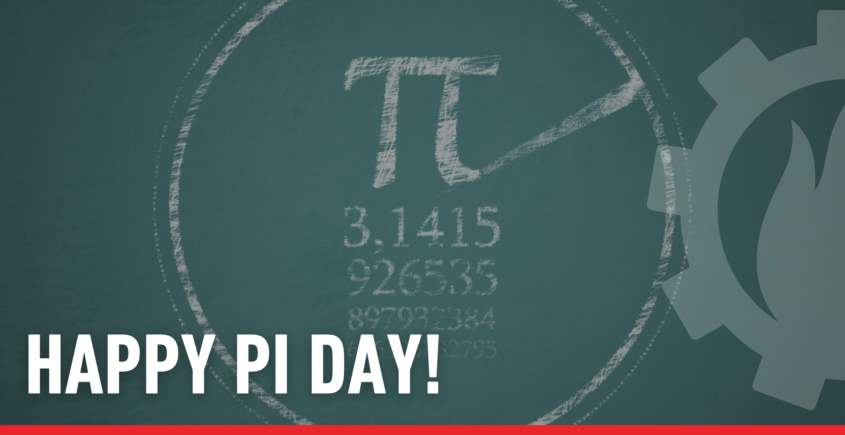Happy Pi Day
Now, you are likely thinking this will be a blog about some wonderful pie recipe I found (ok, pick one HERE.) But actually, it’s about another Pi (π), as today is National Pi Day (and also Albert Einstein’s birthday). One of the most mysterious and essential numbers in mathematics, pi represents the ratio of a circle’s circumference to its diameter. Despite being studied for thousands of years, Pi continues to reveal surprising properties and remains an enigma in the world of mathematics. From ancient civilizations to modern supercomputers, Pi has a rich history filled with remarkable discoveries, mind-boggling calculations, and intriguing trivia. So, put away your dessert plate and enjoy this wonderful trivia and information, and wow your friends with your new knowledge (think Norm from Cheers). Enjoy, and thanks to Google, Wikipedia and pioneerwoman.com for the info.

By popular demand, we’re now sharing guides for the previous week’s logo contest!
Every Friday, scroll to the bottom of the post to review last week’s guide and see if we managed to stump you.
Pi has been known to humanity for at least four thousand years. In 2000 BCE, Babylonian mathematicians performed the first known calculation of the area of a circle using the circumference of an inscribed hexagon and derived an approximate value for pi of 3.125. Egyptians, using their formula for the area of a circle, arrived at 3.1605
The Greek mathematician Archimedes of Syracuse (287–212 BCE) was the first to rigorously approximate Pi, using inscribed and circumscribed polygons. He estimated its value between 3.1408 and 3.1429
The Chinese mathematician Zu Chongzhi (429–500 CE) calculated Pi to seven decimal places (3.1415927), which remained the most accurate approximation for nearly a thousand years
The Indian mathematician Madhava of Sangamagrama (14th century) developed an infinite series expansion for Pi, which influenced later European mathematicians
The symbol π was first used to represent Pi in 1706 by Welsh mathematician William Jones and was later popularized by Leonhard Euler in 1737
Pi is an irrational number, meaning that it cannot be expressed exactly as a ratio of two integers, never ends and never repeats in any predictable pattern. It is also a transcendental number, meaning that it cannot be a solution of an algebraic equation involving only finite sums, products, powers, and integers proving that no finite algebraic equation can produce its exact value
The current world record for memorizing Pi stands at over 100,000 digits, achieved by Rajveer Meena of India in 2015. This is impressive and crazy and scary!!
Supercomputers have calculated Pi to more than 100 trillion digits, but only about 40 digits are needed for most scientific applications. (that’s good!!)
The fraction 22/7 is commonly used as an approximation for Pi, but the fraction 355/113 is much more accurate (I prefer 333/106 when doing my calculations on the golf course) Just ask my golf play group!
NASA uses only about 15 digits of Pi for interplanetary calculations, which is more than precise enough for space travel
There are entire books and poems (called “Piems“) written where the number of letters in each word corresponds to the digits of Pi.
Some conspiracy theorists claim Pi is actually rational, and mathematicians are hiding the truth—though there is no scientific basis for this claim
This wrap up is wonderful – Pi is more than just a mathematical constant; it is a symbol of infinity, mystery, and human curiosity. From ancient approximations to modern supercomputers, Pi continues to captivate minds across cultures and disciplines. Whether used in engineering, physics, or simply for fun in memorization challenges, Pi remains an essential part of our mathematical universe. I’ll salute this!
How did you do on last week’s logo contest?
Check out our logo guide for the “Mistakes Happen” post here!






Leave a Reply
Want to join the discussion?Feel free to contribute!